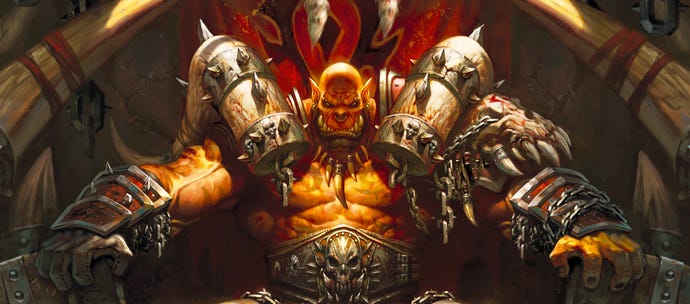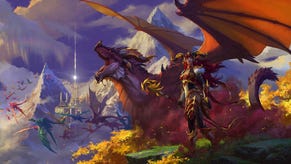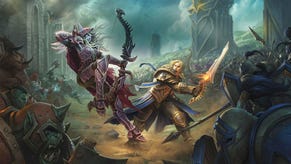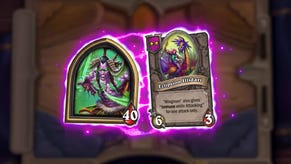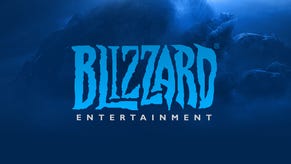Hearthstone Tips and Strategies: Beginner's Glossary, Guide to Terms, Deck Types
In our first Hearthstone how-to, we look at the most important thing of all: learning how to talk the talk.
This article first appeared on USgamer, a partner publication of VG247. Some content, such as this article, has been migrated to VG247 for posterity after USgamer's closure - but it has not been edited or further vetted by the VG247 team.
Already familiar with the local lingo? In that case, you might want to head over to our Hearthstone gold-making guide or check out our compilation of great basic decks.(P.S: Basic Decks don't cost dust, gold or tears.)
As the old saying goes, "Knowing is half the battle." But it's hard when you don't know what a mulligan is and when can't tell your permanents from your spells. How do you decide which deck is best for you when words like "swarm", "burn", "stall" and "aggro" share no familial connections in your headspace? And while Hearthstone's lexicon of terms may still be growing, it's never too early to familiarizing yourself with the local vernacular.
Aggro: Decks that go "RAAAAAAAAAAAWWWWWWWWWR!" Ferocious, fast-moving decks which hinge on murdering your opponent as quickly as possible.
Bad Beat: Horrible, horrible luck.
Bear: A brown fuzzy thing. Also see: creature which costs 2 mana, has 2 power and 2 toughness.
Board Wipes/Board Clear/"AOE": These three terms are often used interchangeably to describe any card which causes damage to multiple targets. Think a hail of hand grenades.
Board Control: When one player is a lot less terrified of losing than the other. Generally, this refers to when one player has more powerful minions on the playing field than their opponent.
Bounce: An inferior form of murder. "Bounce" refers to an effect which causes a card to return to its owner's hand. Unless a part of an overarching strategy, "bounce" effects should be used with care as the owner might well be able to release their minion, now free of any negative effects, back onto the board in the next turn.
Burn:An insult or a card which causes any amount of damage to a target.
Card Advantage: When one player has more toys than the other. Card Advantage refers to when one player is more flushed (Flushed? Card? Get it? Get - er) with the cards than the other -- which generally means the former has more options than the latter.

Coining: That thing the hard-luck case of a second player does with the extra card they receive -- usage of it.
Cantrip: Pick a card! Any card! Except the ones that say "LOSE THE GAME." Cantrips are low-cost cards with the text "draw a card" and are seen as great because they're cheap and at least passingly helpful. See also: the best thing that can be said of clumsy wizards. (Thanks, Richard Cobbett!)
Combo: Things that go together like bacon and eggs; any combination of cards that are used in tandem with one another to generate a certain strategy.
Constructed: A game where pre-made decks are used.
Control: A deck for your inner megalomaniac. Control decks revolve around maintaining an iron-fisted grip on the situation and tends to include holding out up till the point a few key threats can be properly utilized.
Clock: Clocks mark the life's grinding, inexorable progression towards its final form: mulchy, worm porridge. Unsurprisingly, it's used to refer to how quickly a minion can end an opponent if left unattended.
Curve/Mana Curve: The graph your spells will plot when you arrange them by mana cost. Also see: that thing you should pay attention to when attempting ensure you have cards amenable to every stage of the game.
Drop: Minion. Creature. Critter under your control.
Fetch: "Fetch, boy! Get the card for me, boy! There we go!" (Yes, totally like that.)
Filtering: When you expertly sort through your cards so you can have the right card at the right time.
French Vanilla/Vanilla: : A delicious sort of coffee. Also, cards that use only basic rules text like Taunt or Charge.
Going Off: You know that phenomenon which takes place when explosives, well, explode? Yeah. Yeaaaah.
Match-making rating/MMR: The mark of coolness. It's a hidden value attached to every player which informs the game of their relative skill.
Meta Game: Why you're reading this guide and so many others - because understanding the "meta game" involves understanding what's hot and what's not in the world of Hearthstone.
Nuke/Wipe: Card-pocalypse. (Something that wipes the board clean of cards.)
Mid-Range: Jack of all trades, monster of none. The deck which sits between Aggro and Control.
Mulligan: To replace cards. You normally "mulligan" at the beginning of the game if you find yourself with cards you can't potentially use in the next five turns.
Permanent: Anything you can potentially nail to a wall. (Creatures, weapons, etc)
Ping: It's the act of placing the last straw on the camel's back. An action involving the single pivotal point of damage necessary to finish off a target. Pong's long-suffering other half.
Ramp: A Druidic speciality, according to some. Ramping translates to using cards to rapidly increase your pool of resources so you can lead up to scarier things quicker. Think: the stretch of mountain a snowball is rolling down as it grows up into a full-fledged avalanche.
Synergy: Something that is very similar to a "combo" but not quite. Like a great couple, cards that have synergy are cards that play well together, but do not necessarily need one another to function. In general, having cards that largely synergize is A Good Idea.
Top Deck: A Top Deck can mean several things. "Topdecking" is sometimes used as a ridiculously fancy way of saying you drew a card. Traditionally, it refers to when someone finds themselves in an awesome situation because of a freshly drawn card. I.E: When your opponent is down to a certain amount of health and you pull out a spell that can damage them for exactly that amount that turn. Also see: desperately attempting to play with an empty hand and that one card you draw each turn.
